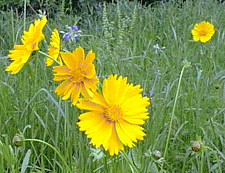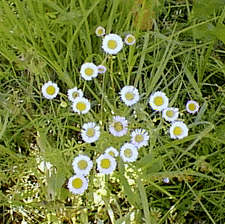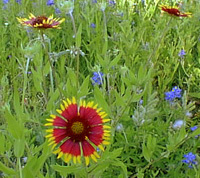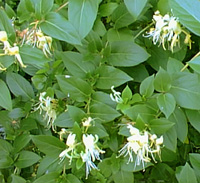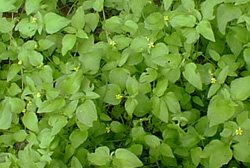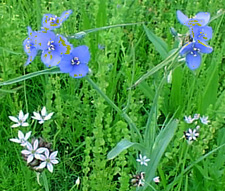Lanceleaf Coreopsis (Coreopsis lanceolata)
(April to June)
This yellow daisy with a yellow center is also called Golden Wave. It can establish a colony of flowers similar to Sleepy Daisy, although, unlike it, it is a perennial. It is called "lanceleaf" because of its long, narrow leaves. It spreads by stems rooting and by seed and the expansin of clumps. A number of buds can be seen in the lower foreground. These daisies are intermixed with Spiderworts, seen dimly in the background.
